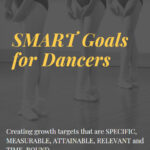Puerto Rico resonates with rhythm, and before the global beats of salsa and reggaetón took hold, there was bomba. More than just a genre of music, bomba is an immersive cultural experience encompassing instruments, song, and a profoundly expressive dance. It’s not just heard; bomba is deeply felt.
Let’s delve into the heart of this captivating art form and discover how Bomba Dance has shaped the vibrant tapestry of Puerto Rican culture.
What is Bomba Dance?
Bomba dance stands out as a unique dialogue between movement and music. Unlike many dance forms where dancers follow a pre-set rhythm, in bomba, the dancer takes the lead, dictating the rhythmic nuances for the musicians. Imagine a vibrant conversation unfolding between a central dancer and the lead drummer, known as the tocador. The interaction is dynamic and spontaneous, a true expression in real-time.
The musical landscape of bomba is rich and varied, ranging from the spirited holandé, a rhythm that ignites dancers with its infectious energy and enthusiasm, to the introspective yubá, imbued with a more solemn and spiritual character. Beyond these, bomba boasts a diverse palette of rhythms, including the compelling sicá, the flowing cuembé, the brisk seis corrido, and the grounded corvé, among approximately 16 recognized rhythms, each with regional variations that add to bomba’s intricate beauty.
Vocally, bomba often features a chorus of three or more singers engaging in a call-and-response pattern with a lead soloist. This structure echoes the lyrical traditions of the son, where the soloist initiates a phrase, and the chorus responds, punctuated by improvised verses. Musically, the tocador drum is paramount, interpreting and scoring the dancer’s every move. The buleador drum provides a steady rhythmic foundation, while the cantador (solo singer) guides the musical flow.
The dance itself is a captivating spectacle. A dancer enters the performance space, offering a respectful greeting to the tocador, before initiating piquetes, improvised bomba steps that are unique to each dancer and moment. What follows is a mesmerizing musical exchange between dancer and tocador, a rhythmic conversation expressed through movement and drum beats. Upon concluding their dance, a bow to the tocador signifies the end of their dialogue, paving the way for the next dancer to step into the circle and begin their own rhythmic story. Notably, bomba dance showcases distinct styles: female dancers often emphasize body movements and the graceful flow of their petticoat skirts to articulate their piquetes, while male dancers frequently utilize broader body movements to express their rhythmic interpretations.


